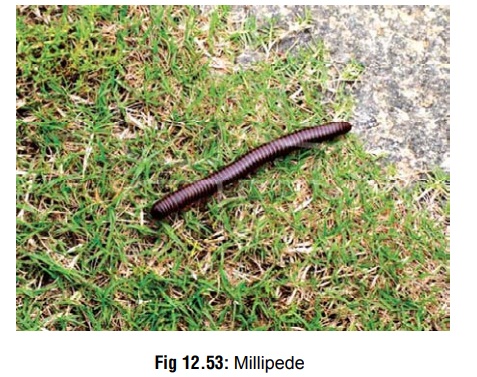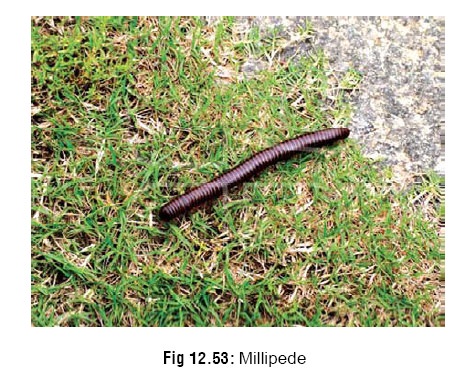Chapter: Modern Medical Toxicology: Organic Poisons (Toxins): Venomous Bites and Stings
Millipedes - Venomous Creature

MILLIPEDES
Millipedes
belong to Diplopoda, and are commonly encoun-tered in the countryside, especially
during monsoon (Fig 12.53). They
vary from a few centimeters to several centimeters in length, and have even
more legs than centipedes (but not
one thousand!).* Millipedes have two pairs of legs per segment and move slowly
(in contrast to the centipedes which have one pair of legs per segment, but
move quite fast) . Also, millipedes have a cylindrical body, while centipedes
are usually flattened.
Millipedes
do not bite, and are not venomous, but have a glandular system that produces a
foul-smelling, disagreeable fluid containing phenols and hydrocyanic acid. Some
millipedes secrete or squirt these irritant liquids for defensive purposes,
which can cause brown or purple skin lesions that blister after a few days and
then peel. Sometimes these lesions take a long time to heal. Contact with the
eye can result in severe conjunc-tivitis, corneal ulceration, and even
blindness.
Treatment
involves copious irrigation with water, and appli-cation of a topical
anti-microbial agent. Eye injury necessitates expert ophthalmologic evaluation
and treatment.

Related Topics